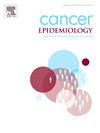加拿大前列腺癌死亡率的社会经济不平等:三十年趋势分析
IF 2.3
3区 医学
Q3 ONCOLOGY
引用次数: 0
摘要
在加拿大,前列腺癌是男性中诊断最多的癌症,也是癌症相关死亡的第三大原因,占男性所有癌症死亡人数的10% %。本研究探讨加拿大男性前列腺癌死亡率的社会经济不平等。使用在人口普查部门级别编制的数据集(n = 280),数据来源包括加拿大生命统计死亡数据库和1992年、1996年、2001年、2006年和2016年的加拿大人口普查,以及2011年全国家庭调查,我们调查了1990年至2019年加拿大男性前列腺癌死亡率的社会经济不平等。我们应用年龄标准化浓度指数(C)来衡量与收入和教育水平相关的死亡率不平等。趋势分析是为了评估这些不平等随时间的变化。在研究期间,加拿大前列腺癌的粗死亡率为每10万男性24.82人,并且随着时间的推移显著下降。年龄标准化C显示1999年、2001年和2005年低收入男性前列腺癌死亡率较高。此外,我们还观察到,在受教育程度较低的人群中,死亡率的集中度明显更高,尤其是在最近的研究中。趋势分析显示,在研究期间,受教育程度较低的男性前列腺癌死亡率越来越高。我们的研究显示,前列腺癌死亡率在低教育程度的男性人群中呈上升趋势。在最近的研究中,PCa死亡率的社会经济不平等可能部分归因于不同地理区域的治疗机会差异以及社会经济地位较高的男性的机会性筛查。本文章由计算机程序翻译,如有差异,请以英文原文为准。
Socioeconomic inequalities in prostate cancer mortality in Canada: Three decades trend analysis
In Canada, prostate cancer is the most diagnosed cancer among males and the third leading cause of cancer-related deaths accounting for 10 % of all cancer fatalities in males. This study examines socioeconomic inequalities in prostate cancer mortality among the Canadian male population. Using a dataset compiled at the census division level (n = 280) from sources including the Canadian Vital Statistics Deaths database and the Canadian Census of Population for the years 1992, 1996, 2001, 2006, and 2016, as well as the 2011 National Household Survey, we investigated socioeconomic inequalities in mortality rates in prostate cancer among Canadian men from 1990 to 2019. We applied the age-standardized Concentration index (C) to measure inequalities in mortality linked to income and education levels. Trend analysis was conducted to evaluate the changes over time of these inequalities. The crude prostate cancer mortality in Canada was 24.82 per 100,000 males over the study period and decreased significantly over time. The age-standardized C showed a higher concentration of prostate cancer mortality among low-income males in 1999, 2001 and 2005. Additionally, we observed a significantly higher concentration of mortality among less-educated groups, particularly in the more recent study years. Trend analysis revealed a growing concentration of prostate cancer mortality among less-educated males over the study period. Our study revealed an increasing concentration of PCa mortality among low-educated male populations. Socioeconomic inequalities in PCa mortality may be partly attributable to variations in treatment access across different geographic regions and opportunistic screening among higher socioeconomic status males in the more recent study years.
求助全文
通过发布文献求助,成功后即可免费获取论文全文。
去求助
来源期刊

Cancer Epidemiology
医学-肿瘤学
CiteScore
4.50
自引率
3.80%
发文量
200
审稿时长
39 days
期刊介绍:
Cancer Epidemiology is dedicated to increasing understanding about cancer causes, prevention and control. The scope of the journal embraces all aspects of cancer epidemiology including:
• Descriptive epidemiology
• Studies of risk factors for disease initiation, development and prognosis
• Screening and early detection
• Prevention and control
• Methodological issues
The journal publishes original research articles (full length and short reports), systematic reviews and meta-analyses, editorials, commentaries and letters to the editor commenting on previously published research.
 求助内容:
求助内容: 应助结果提醒方式:
应助结果提醒方式:


